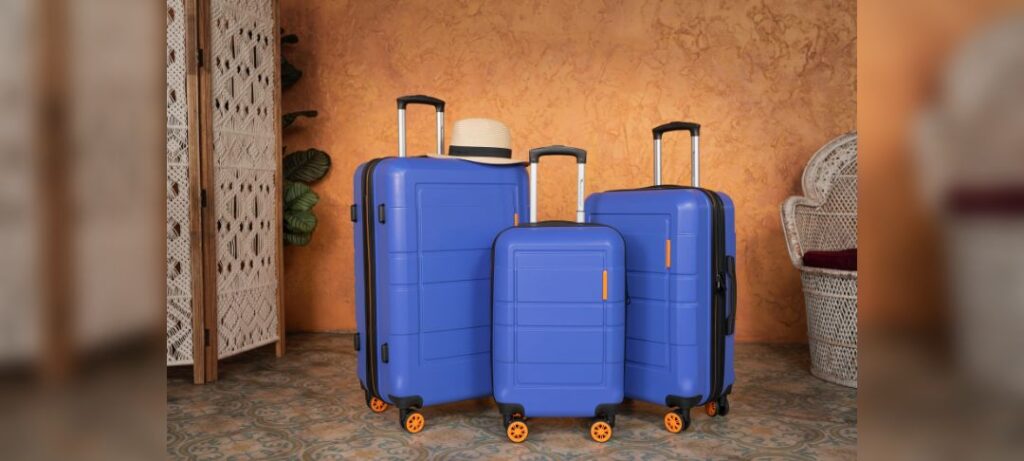Traveling can be both exhilarating and stressful. Many of us dread the process of packing, especially when it comes to safeguarding our belongings. We want our luggage to be secure, but we’re not sure how to achieve that without drawing unwanted attention from airport security. One question that comes to mind is whether or not we can lock our luggage on a domestic flight. In this blog post, we’ll explore this question in-depth, discussing domestic flight regulations, TSA guidelines, risks associated with locking luggage, and alternatives to traditional locks. We’ll also provide tips on securing luggage and preparing for a domestic flight.
Overview of Domestic Flight Regulations
Domestic flights are defined as flights that take place within the borders of a country. Regulations for these flights vary based on the country and airline. However, there are some general regulations that apply across the board. For example, airlines typically limit the amount of luggage that a passenger can bring on board, and specific rules apply to the size and weight of the luggage. It’s important to check with the airline before packing to ensure that you comply with these regulations. In addition, many airlines have restrictions on the types of items that can be packed in checked luggage. For example, hazardous materials, firearms, and flammable liquids are not allowed. Finally, it’s important to label your luggage with your name, address, and contact information to prevent loss or misplacement.
TSA Guidelines
The Transportation Security Administration (TSA) is responsible for ensuring the safety of travelers and their belongings. They have established guidelines for what can and cannot be brought on board a domestic flight. When it comes to locked luggage, the TSA has specific guidelines to follow. While it’s allowed to lock your luggage on a domestic flight, the TSA reserves the right to break the lock if they need to inspect your luggage. For this reason, the TSA recommends using a TSA-approved lock. These locks can be opened by TSA agents using a special key, which means they can inspect your luggage without damaging the lock. TSA-approved locks are widely available and can be purchased at most luggage stores or online. It’s also worth noting that the TSA may choose to inspect your luggage whether or not it is locked, so it’s essential to be prepared for this possibility.
Risks of Locking Luggage

While locking luggage on a domestic flight can provide a sense of security, it’s important to be aware of the risks associated with doing so. One of the primary risks is that a locked bag may draw unwanted attention from thieves. Locked bags suggest that there may be valuables inside, making them a prime target for theft. In addition, if the TSA needs to inspect your luggage and they don’t have a TSA-approved lock, they may break the lock to gain access. This can be frustrating for travelers who have spent money on a high-quality lock. Another risk associated with locking luggage is that it can make it more difficult to locate in the event that it is lost or misplaced. It’s important to weigh the benefits and risks of locking your luggage on a domestic flight before making a decision.
Types of Locks
When it comes to locking your luggage, there are several types of locks to choose from. The most common types of locks are combination locks, key locks, and padlocks. Combination locks are popular because they don’t require a key, and the combination can be easily changed. Key locks, on the other hand, require a key to unlock and can be more difficult to replace if lost. Padlocks are also commonly used and come in different sizes and shapes. Some padlocks are designed specifically for luggage and can be secured to the zipper pulls or other parts of the luggage.
In addition to these traditional locks, there are also high-tech options, such as smart locks. These locks can be opened using a smartphone app and can be set to only allow certain people to access your luggage. Smart locks can be pricey, but they offer a high level of security and convenience.
Another type of lock that is gaining popularity is the cable lock. Cable locks are made up of a flexible cable with a lock on the end and can be looped around the luggage handle or other parts of the luggage. Cable locks are a good option for travelers who want to secure multiple bags together or secure their luggage to a stationary object.
Alternatives to Locking Luggage
Locking your luggage isn’t the only way to secure it. There are several alternatives to traditional locks that are worth considering. One popular option is tamper-evident bags. These bags are made of clear plastic and have a seal that shows if the bag has been opened. Tamper-evident bags are a good choice for travelers who want to deter theft and ensure that their luggage hasn’t been tampered with.
Another alternative to locking luggage in plastic wrap. Plastic wrap is applied directly to the luggage and provides a physical barrier to prevent theft and tampering. Some airports offer plastic wrapping services at the check-in counter for a small fee.
Finally, it’s worth considering packing your luggage in a way that makes it difficult for thieves to access it. For example, packing heavier items at the bottom of the luggage and lighter items at the top can make it more challenging for someone to open your luggage quickly. Also, using packing cubes can help keep your belongings organized and make it more challenging for thieves to find what they’re looking for.
Tips for Securing Luggage
Regardless of the method you choose to secure your luggage, there are several tips you can follow to help protect your belongings. First, avoid packing valuable items in your checked luggage. Instead, keep these items with you in your carry-on bag. Second, label your luggage with your name, address, and contact information. This will help ensure that your luggage is returned to you in the event that it is lost or misplaced. Third, consider using a luggage tag that conceals your personal information. This can help prevent identity theft and protect your privacy.
Fourth, it’s essential to pack your luggage in a way that allows for easy inspection. If the TSA needs to inspect your luggage, they may cut through straps or zippers to gain access. By packing your luggage in a way that makes it easy to open and close, you can help prevent damage to your luggage. Finally, it’s a good idea to keep an inventory of the items in your luggage. This will help you identify any missing items and file a claim with the airline or insurance company if necessary.
In conclusion, locking your luggage on a domestic flight is a personal decision that depends on your individual preferences and the type of items you’re bringing with you. While there are risks associated with locking your luggage, there are also several types of locks and alternatives to consider. By following TSA guidelines, securing your luggage in a way that makes it easy to inspect, and using a combination of locks and other security measures, you can help protect your belongings while traveling. Here are some additional tips to keep in mind:
- Be aware of your surroundings. If you see someone acting suspiciously or attempting to access your luggage, report it to airport security immediately.
- Use common sense when packing. Don’t pack anything that is prohibited by the TSA or that could be considered a security risk.
- Keep an eye on your luggage at all times. Don’t leave your bags unattended, even for a moment.
- If you’re traveling with a companion, consider splitting your belongings between your two bags. This can make it more challenging for thieves to steal all of your valuables at once.
- Consider investing in travel insurance. This can help protect your belongings in the event that they are lost, stolen, or damaged during your trip.
By following these tips and taking a proactive approach to securing your luggage, you can enjoy a worry-free travel experience. Remember, the safety and security of your belongings are ultimately in your hands, so take the time to make the right decisions when it comes to locking and securing your luggage.
Conclusion
Locking your luggage on a domestic flight is a personal decision that depends on your individual preferences and the type of items you’re bringing with you. While it’s allowed to lock your luggage, there are risks associated with doing so, such as drawing unwanted attention from thieves or having the lock broken by the TSA. However, by following TSA guidelines and using a TSA-approved lock, you can minimize these risks and protect your belongings. It’s also worth considering alternatives to traditional locks, such as tamper-evident bags or plastic wrap. By taking the time to secure your luggage and prepare for your domestic flight, you can enjoy peace of mind and a stress-free travel experience.
